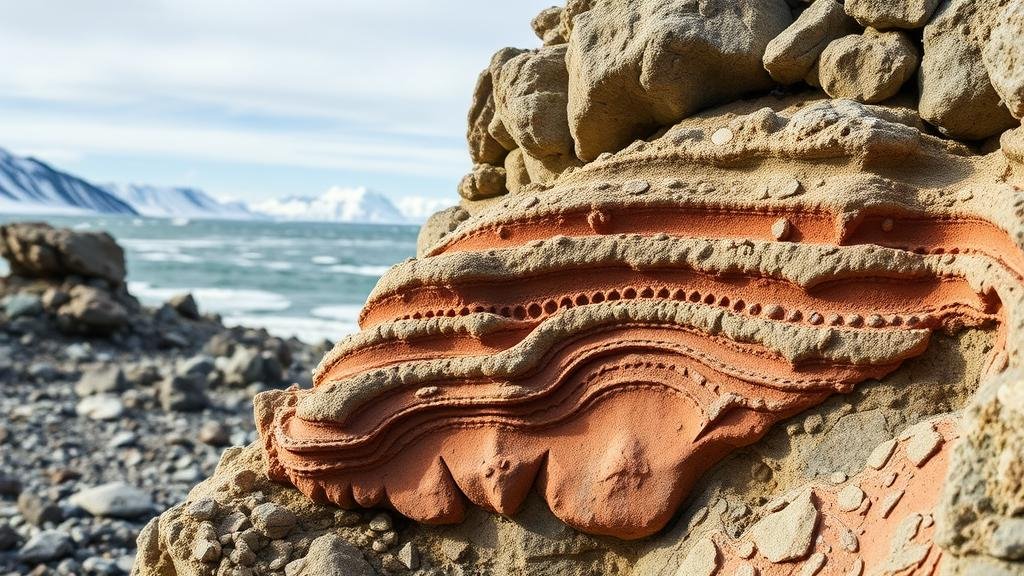Excavating fossilized plants in Greenland’s geologic layers, revealing ancient warm climates.
Excavating Fossilized Plants in Greenland’s Geologic Layers
Greenland, with its vast and varied geological landscape, has recently emerged as a significant site for excavating fossilized plants. These discoveries offer profound insights into ancient warm climates that once dominated this Arctic region. For rockhounds and mineral collectors, reveling in the remnants of prehistoric ecosystems can be both an enriching scientific experience and an invaluable opportunity for their collections.
The Geological Context of Greenland
Greenlands geology is predominantly composed of ancient crystalline rocks, with sedimentary layers that have been shaped by tectonic activity over millions of years. fossilized plants are predominantly found in two key geologic formations:
- Naqsaq Formation: This formation, dating back to the Early to Middle Jurassic period, contains abundant plant fossils that provide evidence of a much warmer climate.
- Jameson Land Formation: Dating from the Late Jurassic to Early Cretaceous, this region reveals insights into the lush, subtropical ecosystems that once thrived in Greenland.
The presence of fossilized wood, leaves, and even pollen grains showcases the diversity of flora that adapted to a significantly warmer climate compared to today’s icy landscape.
Uncovering Fossilized Flora
Fossil excavations can yield remarkable findings for collectors and researchers alike. Fossils such as ferns, cycads, and conifers have been identified, reflecting biodiversity that rivals today’s temperate zones. For example, some of the leaf fossils discovered in the Jameson Land Formation are reminiscent of modern-day bay laurel and magnolia, providing a direct link to ancient temperate forests.
Scientific Significance
The fossilized plants in Greenland not only capture the essence of ancient climates but also help scientists understand climate change and ecological responses. Research indicates that during the Early Cretaceous, average temperatures in the region could have ranged between 10°C to 20°C higher than today. This information is vital as it allows for a clearer understanding of climatic shifts and their ecological consequences over geological timeframes.
Practical Tips for Rockhounds
For collectors interested in exploring Greenlands fossil beds, here are some actionable tips that can enhance your excavating experience:
- Research Locations: Familiarize yourself with prominent sites such as the Naqsaq and Jameson Land formations to maximize your chances of successful finds.
- Permits and Regulations: Always check local laws regarding fossil collection. Some areas may require permits to collect specimens.
- Invest in Proper Tools: Essential tools include a geological hammer, chisels, safety goggles, and a sturdy box for transporting delicate finds.
- Document Your Finds: Keeping detailed notes about where and in what context a fossil was found will enhance both its scientific value and provenance in your collection.
Collecting and Preservation Techniques
Preserving the integrity of fossilized specimens is crucial. Use the following techniques to ensure your findings remain intact:
- Clean Fossils Gently: Use a soft brush to remove loose dirt. Avoid harsh chemicals that may erode the fossil.
- Storage Solutions: Store fossils in acid-free containers to prevent damage from chemical reactions.
- Display with Care: When displaying fossils, ensure they are in a stable environment, away from direct sunlight and humidity.
Conclusion
Excavating fossilized plants in Greenland offers a unique window into an ancient world that once thrived under warmer conditions. For rockhounds and mineral collectors, these adventures are not only about the hunt but also about understanding a dynamic Earth history. By applying best practices for collection and preservation, enthusiasts can significantly contribute to both personal collections and the broader scientific community.



